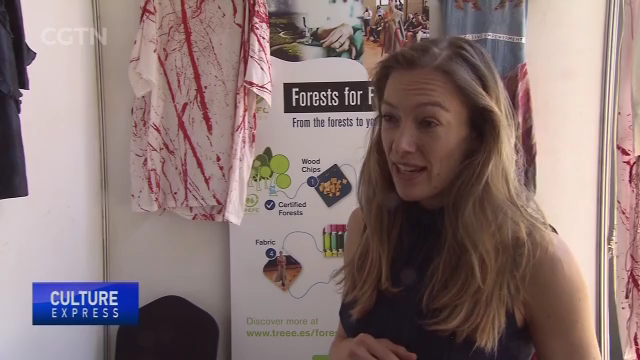
19:08, 14-Mar-2019
Sustainable Fashion: Discarded wood chips used to make clothing
Updated
19:00, 17-Mar-2019
02:34

Over to Kenya, conservation is the focal point of the UN Environment Assembly and the One Planet Summit in Nairobi this year. March 21 has been designated as the International Day of Forests. The UN Economic Commission for Europe has STARTED an INITIATIVE called Fashion for Forests. The project has discovered a valid alternative to traditional raw materials, using discarded wood chips to make high-quality garments. Here I have to say 'seeing is believing!'
From the forests to the runway, these are the garments of the future.
At a corner of the ongoing United Nations Environmental Assembly in Nairobi, the United Nations Economic Commission for Europe and its partners are showcasing a new concept.
These clothes are made entirely from fabric made out of wood chips.
The project is the culmination of many years of research by scientists who seek sustainable ways to produce quality textiles while conserving the environment.
BIRGIT LIA FAIN ASSOCIATE ECONOMIC AFFAIRS OFFICER, UNECE/FAO "How it works is that you take a tree from a certified forest so it's sustainably managed and you turn that into wood-chips which could also be a by-product from the sawmill industry or like a waste product and this is transformed into wood pulp and then into wood fibres and then it can be transformed into those beautiful textiles to make fashion."
The fabrics vary in texture and quality, depending on the chemicals used. Already a section of designers have taken up the challenge, designing versatile pieces from the fabrics. In time, scientists hope that textiles made in this way will be widely accepted across the world.
LEONIE MEIER CONSULTANT, UNECE/FAO "It doesn't always have to be synthetic, it doesn't always have to be polluting and it doesn't always have to be conventional cotton which requires a lot of pesticides."
BIRGIT LIA FAIN ASSOCIATE ECONOMIC AFFAIRS OFFICER, UNECE/FAO "The textile is a lot more environmentally friendly than a lot of the other alternatives that are currently taking the major parts of the textile market. It uses 120 times less water than cotton."
However the technology is only available in parts of Europe. Currently the textiles only make up 1% of the fabrics used across the world. But the word is spreading and its creators hope that one day, they will dress the world in wood. WILKISTER NYABWA, CGTN.

SITEMAP
Copyright © 2018 CGTN. Beijing ICP prepared NO.16065310-3
Copyright © 2018 CGTN. Beijing ICP prepared NO.16065310-3